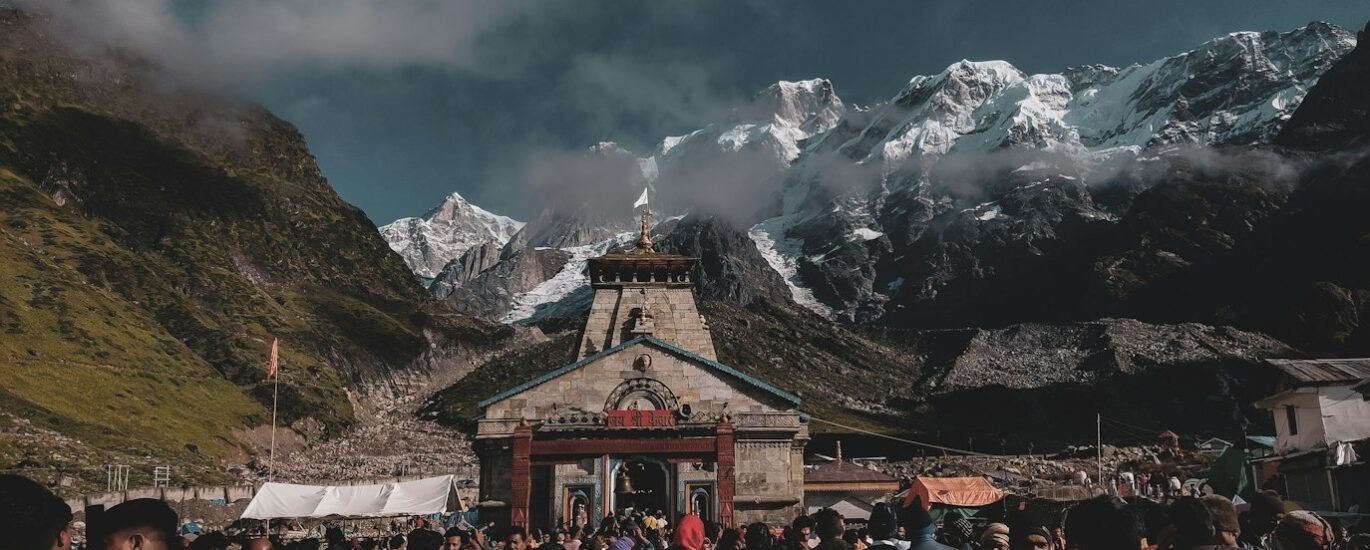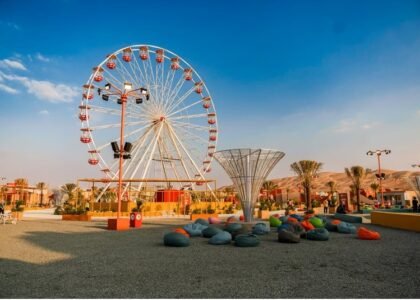I’ve always dreamed of visiting Kedarnath, one of the most sacred shrines in India, and experiencing its spiritual energy up close. The challenge? I only had one day. So, I rolled up my sleeves, mapped out a plan, and made it happen—all within 24 hours. If you’re wondering how to plan a Kedarnath Yatra in one day, let me walk you through the ultimate guide based on my firsthand experience. With the right itinerary, it’s totally doable!
Introduction to Kedarnath Yatra
Why I Felt Drawn to Kedarnath
Kedarnath isn’t just a destination—it’s a powerful presence. Sitting majestically in the Garhwal Himalayas, the temple is one of the twelve Jyotirlingas of Lord Shiva. I’ve always felt a deep spiritual calling to visit it. What makes it even more magical is the dramatic scenery—the snow-covered peaks, the cool breeze, the Mandakini River flowing nearby. Every inch of the place feels like divine energy is flowing through it.
I knew Kedarnath was part of the Char Dham Yatra, and that added to the weight of this journey. I had limited time, but the call was too strong to ignore. So I decided to go for it, aiming to complete the yatra in just one day.
Can This Really Be Done in One Day?
Let me be honest—when I first thought about doing Kedarnath in a single day, even I had my doubts. But yes, it’s 100% possible, provided you skip the traditional trek and go by helicopter. The usual trek from Gaurikund to Kedarnath is around 16 km one way. Doing that both ways in a day? Brutal and nearly impossible unless you’re an extreme trekker.
So I went with the smarter option—booking a chopper ride. From bases like Phata, Sersi, Guptkashi, or Sitapur, you can reach Kedarnath in just 8 to 10 minutes. That saved me hours and made the one-day plan completely viable.
Understanding Kedarnath’s Geography and Accessibility
Where It’s Located and Why That Matters
Kedarnath is tucked away in Uttarakhand’s Rudraprayag district. It’s situated at an elevation of about 3,583 meters (11,755 feet), and trust me, you feel that altitude! The temple stands near the Mandakini River and is surrounded by towering Himalayan peaks. It’s stunning, but this remote location also makes getting there a challenge.
No vehicles can go all the way to the temple. The farthest you can drive is up to Gaurikund. From there, it’s either on foot, pony, or helicopter. That’s why understanding the geography is crucial before planning a one-day trip.
Weather and Travel Rules to Keep in Mind
I learned quickly that weather in the Himalayas can be pretty moody. One moment the skies are clear, and the next, clouds roll in and everything shuts down. Especially during monsoon (July to September), landslides and rainfall can disrupt the entire yatra. So, planning my trip in May gave me a good shot at smooth travel.
Also, you can’t just show up and go. Everyone has to register for the yatra, either online or at checkpoints. There are mandatory health screenings too. I had to carry my ID proof and registration confirmation to board the helicopter.
Best Time to Visit Kedarnath for a One-Day Trip
The Perfect Months (And Why I Chose May)
I planned my trip in May, and it was a great call. The temple opens around late April or early May each year and remains open till early November. During May and June, the weather is relatively stable, and you can expect decent skies and less snow. September to October is also good post-monsoon, but it starts to get really cold.
Mid-week in May? That’s the golden window. Fewer crowds, better chances of helicopter availability, and smooth darshan experience.
When NOT to Go
Take it from me—avoid July and August at all costs. The rains can wash out roads, delay choppers, and make trekking dangerous. I’ve heard stories of people getting stranded for days. Also, skip weekends and big Hindu festivals when the place gets overwhelmingly crowded. I picked a Tuesday and was in and out with minimal waiting.
Modes of Transport Available for Kedarnath Yatra
Why Helicopter Was My Savior
I booked my helicopter from Phata through the official IRCTC HeliYatra site. It was a quick, scenic ride that lasted less than 10 minutes. I felt like I was flying over heaven—the snow-covered mountains, the river valleys—it was breathtaking.
But here’s the kicker: I had to be at the helipad super early. My slot was at 6:00 AM, and I had to check in 45 minutes before. Also, they allow very limited luggage—just 5 kg—so I packed light.
My Journey by Road to the Helipad
Before I could fly, I had to get to the base. I drove from Rishikesh to Phata the day before and stayed overnight. That journey took around 8 hours. The roads are winding and narrow, but the views were worth it. I passed Devprayag, Rudraprayag, and the river confluences were just mesmerizing.
From Phata, Gaurikund is also accessible, which is where trekkers and pony riders begin. But since I was flying, I skipped that part.
Pony and Palanquin Options—If You Have No Helicopter
Just in case you’re wondering—yes, you can take a pony or a palanquin if you don’t get a chopper ticket. From Gaurikund, it’s a steep 16 km climb. I met people who started at 3:00 AM and made it by noon. It’s not impossible, but for a one-day plan? It’s too risky.
Pony rides cost around ₹2,500–₹3,500, and palanquins can go up to ₹10,000. If you’re not fit or comfortable at high altitude, I wouldn’t recommend this for a tight schedule.
One-Day Kedarnath Yatra Itinerary (Hour-by-Hour Plan)
My Hourly Breakdown
Let me give you the exact plan I followed:
- 4:30 AM: Woke up, got dressed in layers, and headed to the helipad.
- 5:15 AM: Reached Phata Helipad, checked in with my ID and registration.
- 6:00 AM: Boarded the helicopter.
- 6:10 AM: Landed near Kedarnath—just a short walk to the temple.
- 6:30 AM: Entered the temple for darshan. No long lines, super peaceful.
- 7:30 AM: Explored the temple complex and visited Bhairavnath Mandir.
- 8:15 AM: Returned to the helipad for my flight back.
- 9:00 AM: Reached Phata, had a hearty breakfast, and checked out of my hotel.
What Happened at the Temple
I can’t even explain the feeling I had when I entered Kedarnath temple. The chants, the vibe, the history—it was spiritual on another level. The temple is simple but grand. I offered my prayers, touched the Jyotirlinga, and sat silently for a while just to absorb the energy.
The backdrop is incredible. Snow-capped peaks behind the temple, and a chilly wind that made everything feel divine. I also visited Bhairavnath Temple nearby, which watches over Kedarnath during the winter when the main temple is closed.
Important Tips for a One-Day Kedarnath Yatra
Things I Booked in Advance
- Helicopter Ticket: IRCTC HeliYatra portal. Booked 4 weeks in advance.
- Hotel Room: Stayed at Phata for easy access.
- Yatra Registration: Done online. Printed a hard copy.
I also carried my Aadhaar card, passport-sized photos, and confirmation emails. These are must-haves if you don’t want delays at checkpoints.
What I Packed (And What I Left Behind)
Since I was limited to 5 kg on the helicopter, I kept it basic:
- Thermal jacket and gloves
- Power bank and fully charged phone
- Light snacks and water bottle
- ID cards and yatra slips
- Wool cap and sunglasses
I left behind anything bulky or unnecessary. Trust me, the lighter your bag, the better your trip.
Health and Safety Precautions
How I Handled the Altitude and Weather
One of the biggest concerns for me was the altitude. Kedarnath sits at over 11,700 feet, and if you’re not used to it, it can really knock you out. I started to feel a bit light-headed and short of breath while walking toward the temple, but I had prepared in advance.
Here’s what helped me:
- I stayed hydrated—carried a water bottle and took small sips frequently.
- I avoided heavy meals the night before.
- I took it slow and didn’t rush once I landed.
If you’ve got any kind of heart or lung issue, make sure you consult a doctor before going. Altitude sickness is no joke. I also carried Diamox (after consulting my doctor) just in case I needed it, and some basic meds for headache and nausea.
What to Do If You Fall Sick
There are medical camps along the yatra route and a small health center near the Kedarnath helipad. But it’s a remote location, and you don’t want to depend solely on that. I carried a basic first-aid kit with:
- Pain relievers
- Antiseptic cream
- Band-aids
- Cotton and gauze
- Motion sickness pills
It is preferable to having it and not needing it.
Budget and Cost Estimation for My One-Day Kedarnath Yatra
Planning on a budget? Let me break down what I spent:
| Expense Item | My Cost (INR) |
|---|---|
| Helicopter Ride (Round Trip) | ₹6,800 |
| Hotel Stay in Phata (1 Night) | ₹1,500 |
| Meals and Snacks | ₹600 |
| Local Transport (Taxi/Shared Cab) | ₹1,200 |
| Registration, Misc | ₹200 |
| Total | ₹10,300 |
Yes, it’s a little pricey for a single day, but considering the spiritual reward and ease of travel, it was totally worth it. If you’re traveling with family or friends, you can share hotel and transport costs to save a little. Planning this Kedarnath Yatra was smooth and stress-free thanks to The Searching Souls. Their expert coordination and prompt service made my one-day yatra a reality. Visit there website to explore their Kedarnath travel packages.
Spiritual Significance of Kedarnath Temple
Why I Felt the Divine Connection
As someone who’s always been fascinated by Hindu mythology, stepping into Kedarnath was like walking into a living epic. Legend has it that the Pandavas, after the Kurukshetra war, wanted Lord Shiva’s blessings to atone for their sins. Shiva, not ready to forgive them, disguised himself as a bull and tried to escape. But Bhima caught him, and Shiva’s hump appeared at Kedarnath—now the Jyotirlinga.
Just thinking about that story while I was standing in front of the temple gave me goosebumps. The spiritual energy there is something I can’t explain. It’s peaceful, powerful, and humbling all at once.
Kedarnath is not just a stop on the Char Dham—it’s a sacred space that connects you to something greater than yourself.
What I Experienced During the Temple Visit
Inside the Temple
When I stepped inside the temple, I felt like time stood still. The main sanctum is small and built entirely out of stone. I stood before the lingam and offered my prayers. There was no rush, no chaos—just pure peace. Phones and cameras aren’t allowed inside, which actually made the experience more intimate.
Around the Temple
After the darshan, I walked around the temple complex. I visited the nearby Bhairavnath Temple, perched on a small hill with stunning panoramic views. It’s believed that Bhairavnath protects Kedarnath during the harsh winter months when the temple is closed.
I also took some time to sit down, breathe, and just absorb the serenity. That 30-minute window of silence—where all I heard was the wind and the temple bells—was probably the most peaceful moment of my life.
Conclusion
Planning a Kedarnath Yatra in one day was one of the most thrilling and spiritually fulfilling experiences of my life. Yes, it takes planning. Yes, it costs a bit. But believe me—it’s absolutely possible, and more than that, it’s absolutely worth it.
I saw the mighty Himalayas, walked through clouds, touched one of the holiest Jyotirlingas, and felt a calm I hadn’t known in years. All in a single day.
If you’ve got even the faintest urge to visit Kedarnath but feel short on time, don’t let that stop you. Pack smart, book early, and go for it. This trip will stay in your soul forever.
FAQs
1. Can I visit Kedarnath and return on the same day?
Yes! I did it myself using helicopter services. As long as you book your flight early and plan your stay near the helipad, you can return the same day after darshan.
2. How early should I book helicopter tickets for Kedarnath?
I booked mine 4 weeks in advance. That’s what I’d recommend, especially if you’re going during May or June.
3. What should I wear during the trip?
Dress in layers! It was cold in the morning, but got warmer by noon. I wore thermals, a down jacket, gloves, and trekking shoes.
4. Is the Kedarnath temple open all year round?
Nope. The temple opens in late April or early May and closes in early November. The exact dates vary each year based on the Hindu calendar.
5. What if I feel sick during the yatra?
There are basic medical facilities and camps, but I highly suggest carrying your own first-aid kit and consulting a doctor beforehand if you have health conditions.






